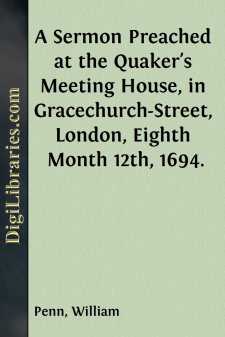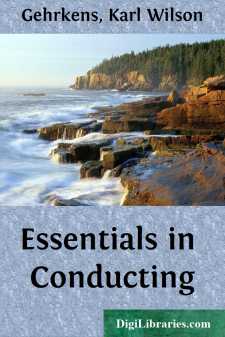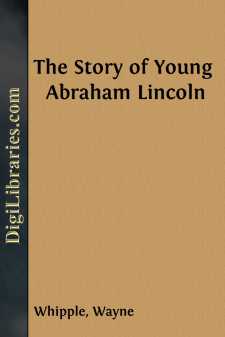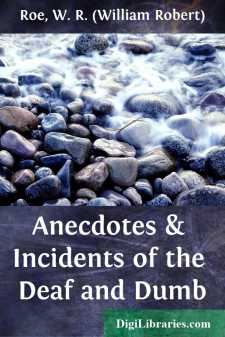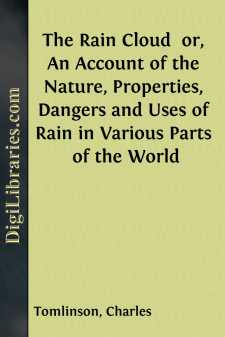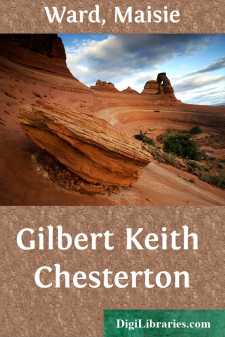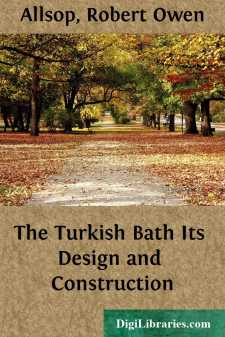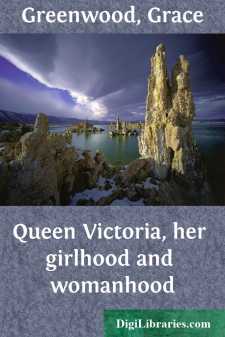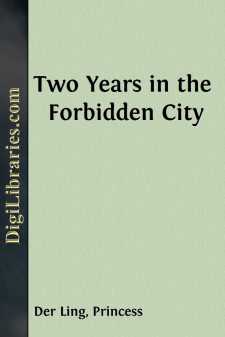Non-Classifiable
- Non-Classifiable 1768
Non-Classifiable Books
Sort by:
by:
William Penn
SERMON. The great and blessed God that made heaven and earth, the seas and the great fountains of the deep, and rivers of water, the Almighty Jehovah, who is from everlasting to everlasting. He also made man and woman; and his design was to make them eternally happy and blessed. And therefore he made man in his own image; "in the image of God created he him, male and female created he them:" He...
more...
CHAPTER I IntroductionDEFINITIONThe word "conducting" as used in a musical sense now ordinarily refers to the activities of an orchestra or chorus leader who stands before a group of performers and gives his entire time and effort to directing their playing or singing, to the end that a musically effective ensemble performance may result. This is accomplished by means of certain conventional...
more...
by:
Wayne Whipple
INTRODUCTION Lincoln From New and Unusual Sources The boy or girl who reads to-day may know more about the real Lincoln than his own children knew. The greatest President's son, Robert Lincoln, discussing a certain incident in their life in the White House, remarked to the writer, with a smile full of meaning: "I believe you know more about our family matters than I do!" This is because...
more...
ASK A BLESSING. little boy was admitted as a pupil into the Institution for the Deaf and Dumb at Derby. Previous to his admission he had given his parents and friends a great deal of trouble, and fears were entertained that he would be none the less troublesome to those in charge of him at the Institution. Happily however, owing to the firmness and kindness of his teachers, he very soon yielded to...
more...
CHAPTER I: rains peculiar to each season—spring showers—midsummer rains—rains of autumn and winter—means of supplying the earth with rain—rain-clouds—deceptive appearances of clouds—their light and shade—effects of clouds in mountainous countries—ascent of monte pientio—ascent to the peak of teneriffe—grand effects of clouds in the pyrenees—voyage in a balloon through the...
more...
by:
Maisie Ward
INTRODUCTION Chiefly Concerning Sources THE MATERIAL FOR this book falls roughly into two parts: spoken and written. Gilbert Chesterton was not an old man when he died and many of his friends and contemporaries have told me incidents and recalled sayings right back to his early boyhood. This part of the material has been unusually rich and copious so that I could get a clearer picture of the boy and...
more...
INTRODUCTION. Since the revival of the bath of antiquity, and its introduction into this country under the name of the Turkish bath, this method of bathing has become very generally adopted; and although onward progress is rendered less rapid than it might be, by the wide-spread popular ignorance that ascribes an element of danger to the bath, erroneous impressions are being gradually removed, and the...
more...
by:
Grace Greenwood
CHAPTER I. Sketch of the Princess Charlotte—Her Love for her Mother—Anecdotes—HerHappy Girlhood—Her Marriage with Prince Leopold—Her Beautiful Life atClaremont—Baron Stockmar, the Coburg Mentor—Death of the PrincessCharlotte. It seems to me that the life of Queen Victoria cannot well be told without a prefacing sketch of her cousin, the Princess Charlotte, who, had she lived, would have...
more...
INTRODUCTORY MY father and mother, Lord and Lady Yu Keng, and family, together with our suite consisting of the First Secretary, Second Secretary, Naval and Military Attaches, Chancellors, their families, servants, etc.,—altogether fifty-five people,—arrived in Shanghai on January 2, 1903, on the S.S. "Annam" from Paris, where for four years my father had been Chinese Minister. Our arrival...
more...
by:
N. D'Anvers
CHAPTER I Long, long ago there lived far away in India a woodcutter called Subha Datta and his family, who were all very happy together. The father went every day to the forest near his home to get supplies of wood, which he sold to his neighbours, earning by that means quite enough to give his wife and children all that they needed. Sometimes he took his three boys with him, and now and then, as a...
more...


